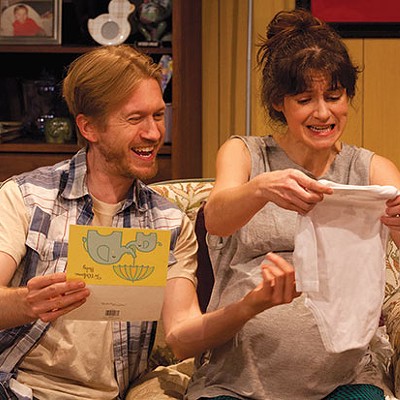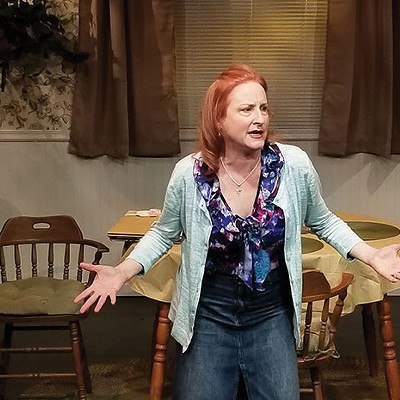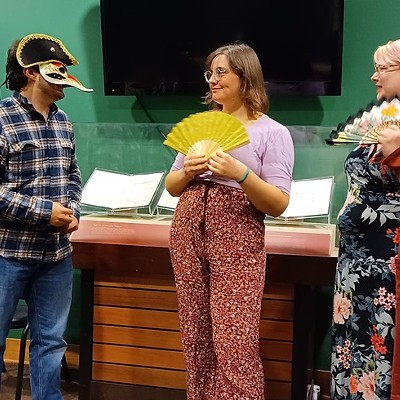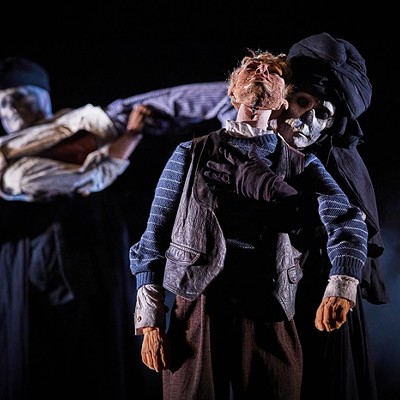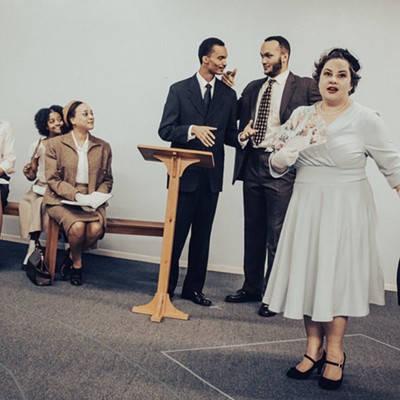An Accident at Off the Wall
The play is Lydia Stryk’s testament to the power of dialogue
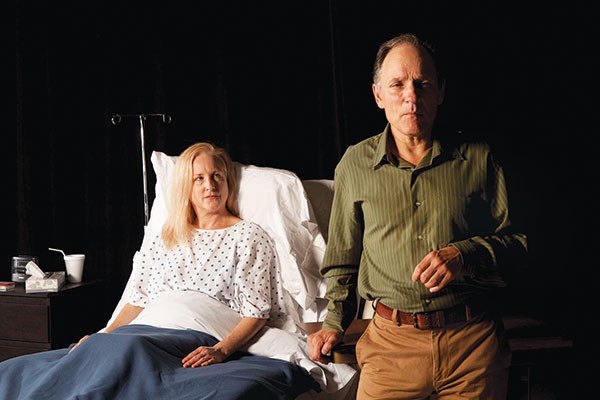
Amy Landis and Ken Bolden in An Accident at Off the Wall
AN ACCIDENT
continues through Oct. 29. Off the Wall Productions at Carnegie Stage, 25 W. Main Street, Carnegie. $25-40. 724-873-3576 or insideoffthewall.com
In An Accident, the visceral road to recovery is led by Amy Landis’ compelling eyes and intense monologues, holding the audience pinned from the start, steadied by the beep of a heart monitor. Landis’ Libby is bound in a hospital bed after a car crash, exploring what parts of her body she can feel and what parts of her life she can remember. Between scenes, our own eyes shift to see the intense guilt-wringing of Ken Bolden’s Anton — the man responsible — outside her room and by her bed, his stiff body pierced by a pain almost equal to that residing in the bed he stares at.
The 2010 play, Lydia Stryk’s emotional testament to the power of dialogue, invites us into some shadowy moments of intimacy and ambiguity as we learn more about Libby’s strangled resentment in coming to deal with her temporary paralysis, and the haplessness of divorced history teacher Anton, whose principal pastime is reading military histories.
I dare the audience not to prickle at director Linda Haston’s enclosing staging, a minimalist set enhanced only by the clinical detail of the hospital bed. The bed is the focal point of some emotionally fervid scenes, charged in erotic revelation. But these displays are pulled off in such a way by the actors and director that the audience neither squirms nor snorts, but is instead entranced and impressed at such brutally honest moments.
There are instances of wit to temper the emotion, as the multilayered implications of guilt, disaster and disability are explored by the two, sometimes to unexpectedly hilarious effect. Their shared accident puts all of life on hold for this unlikely pair. And for 75 minutes, the audience feels that way too, sharing the physical and psychological struggles of responsibility and recovery.
The play ends in a characteristically ambiguous image, with “What now?” the obvious question, and yet with both a definite and indefinite sense of a full circle being completed.
The 2010 play, Lydia Stryk’s emotional testament to the power of dialogue, invites us into some shadowy moments of intimacy and ambiguity as we learn more about Libby’s strangled resentment in coming to deal with her temporary paralysis, and the haplessness of divorced history teacher Anton, whose principal pastime is reading military histories.
I dare the audience not to prickle at director Linda Haston’s enclosing staging, a minimalist set enhanced only by the clinical detail of the hospital bed. The bed is the focal point of some emotionally fervid scenes, charged in erotic revelation. But these displays are pulled off in such a way by the actors and director that the audience neither squirms nor snorts, but is instead entranced and impressed at such brutally honest moments.
There are instances of wit to temper the emotion, as the multilayered implications of guilt, disaster and disability are explored by the two, sometimes to unexpectedly hilarious effect. Their shared accident puts all of life on hold for this unlikely pair. And for 75 minutes, the audience feels that way too, sharing the physical and psychological struggles of responsibility and recovery.
The play ends in a characteristically ambiguous image, with “What now?” the obvious question, and yet with both a definite and indefinite sense of a full circle being completed.



